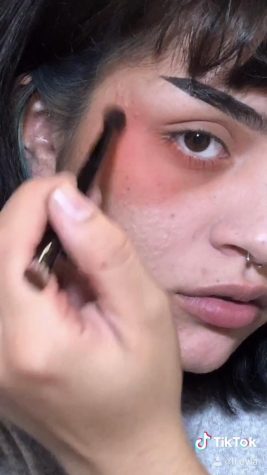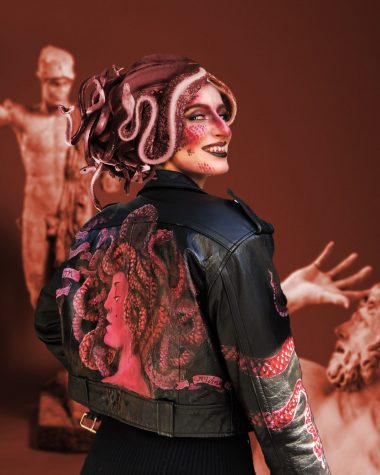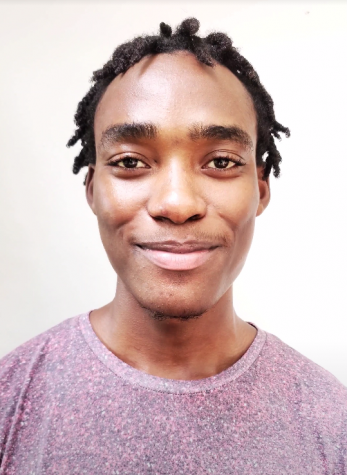Going viral: Students with a claim to internet fame
October 29, 2020
Social media: applications that have us scrolling for hours on end.
We’re consistently looking for new ways to entertain ourselves, especially given the yearly circumstances. I spoke with several Whitman students who’ve managed to capture hundreds of thousands—even millions—of people’s attention using various online platforms.

Senior Leyla Hertzig said, “if [she] ever got famous [she] would hate it; [she] doesn’t like the idea of [getting] that much attention.”
But her TikTok, @ll.eyla, boasts 50.1K followers and 2.2 million likes.
“I’m quite the introvert, which in a way kind of makes me a good fit for posting stuff online,” Hertzig said.
Regular content creation typically keeps people interested and wanting more.
Hertzig regularly creates content that touches on Indigenous representation, skin positivity and self-care. This wasn’t her initial intention. She wanted to share her makeup looks with the world.
She’s struggled with acne and other skin issues for a while, but consciously chooses not to wear foundation when doing her makeup routine. Users of the app sometimes comment on her skin, but to her surprise, this has been what makes her videos so appealing — especially to other girls.
“The fact that I talk about my skin is what people are into,” Hertzig said.
Not only does Hertzig participate in the acne positivity community on Tiktok, she’s also turned into a role model of sorts for young Indigenous girls. There aren’t many Indigenous creators on TikTok, but she’s overjoyed to be one of them.
“There’s a lot of Indigenous girls who are appreciative of having a face like theirs out there,” Hertzig said.
She started making these videos for fun, but it’s become a place to express herself in ways she never has before.
“Using my own face, something I’m familiar with, has made creative self-expression easier,” Hertzig said. “TikTok has given me more confidence and the motivation to present myself to the world confidently.”

For sophomore Ava Wadleigh, TikTok has been a bit of a rollercoaster. She was initially drawn to the app because “there’s something so pleasing about seeing things edited together.”
She posted a four-part video series of a painting project on her account @fresh_avacado_19, and viewers were hooked.
“I had painted [the jacket] before, and I wanted to redo the painting; so, [the video] was my process of doing that. I put commentary on top of it, and people seemed to eat that up!” Wadleigh said.
People started to visit Wadleigh’s art Instagram page as well, but she noticed something very revealing.
Every time she would mention her more professional Instagram account, “[her] views would go from 100K to maybe 100 total.”
She took a break from Tiktok briefly and noticed that “all of sudden the videos don’t get any views anymore.”
Consistency seems to be key. Many popular Tiktok creators do the same thing in each video to a certain extent. Some maybe even have a specific personality that they put on when posting.
Ava says that TikTok is “not a great platform for visual artists. It’s an entertainment app; the art part isn’t enough to get you noticed. It has to be you as the artist also being an entertainer. You have to mix those two things together.”

Like Hertzig and Wadleigh, first year international student Silivan Munguarakarama has also used social media platforms as a means for self-expression. Dancing comes naturally for him.
“Whenever the music is on, my body’s moving,” Munguarakarama said.
He started his YouTube channel back in high school on a whim. He convinced some friends to film a dance video with him, and the rest is history. The first video on his channel quickly climbed to 30k views. Although he’s only uploaded a few additional videos, he’s managed to amass nearly 800 subscribers and 155k views.
And it doesn’t end there. Munguarakarama is also active on Reddit as Silivan9. Late one night, he decided to film himself procrastinating, and he broke the internet.
“I was taking notes from my laptop, and I got so bored that I put the pencil in my hair. Then I looked around and there’s two more pens there… oh I’m just going to put those in too, and then an idea just struck. Within hours my phone was blowing up,” he said.
A week passed by, life carried on for Munguarakarama, and he joked that he even forgot about the video.
A week after posting it, he started receiving texts. Several Chinese friends from high school had seen the video on the video-sharing website BiliBili. They weren’t alone. Some 250 thousand others had seen it as well. He found the site, and sure enough, there he was.
“I have no idea how it got there,” Munguarakarama said.
There’s something intriguing about the video, about the sense of “some sleight-of-hand to it, even though there’s not.”
As he turns his head upwards, it seems that all of the pens and pencils have disappeared. He didn’t intend to create this illusion, but it’s worked to the video’s advantage. To many of his viewers, this is the most mesmerizing part.
In his opinion, “most of the people who saw [his] video most likely don’t have the same hair type,” and this adds to the intrigue and curiosity.
Although this viral video was born of spontaneity, he hopes to craft a plan that will help him “diversify [his] content” so that he can continue to grab the attention of others.
For Kathryn Frank, an associate professor of Film and Media Studies, the use of the term viral itself is interesting. The content we interact with on a daily basis is presented to us strategically, and the more we consume, the more resonant our feeds become. What goes “viral” might be far less random than we think.
One’s feed is managed algorithmically. Its programmer is someone with quotas and goals, and app users serve as data to be collected for their agenda. When the end goal is ultimately viewers’ attention, the means by which creators create are less relevant.
TikTok has been a stand-out platform this past year, and according to Professor Frank, it is unique in several ways.
“There seem to be sweet spots in terms of the length of media,” said Frank.
TikToks are brief videos that are often synced with music and can loop infinitely. Accompanied by a seamless feed, this is a recipe for addiction. Much like any other social media platform, this app has changed the ways that we as a society interact with one another. Not to mention what we interact with.
“A TikTok can touch culture,” said Frank.
And although it may be difficult to see as an individual, “there are more ways that it connects us to traditional media than we would want to think.”
Frank noted that “people are streaming music and selling albums because of a TikTok.”
In terms of social media’s influence on larger movements today, Frank spoke about culture-jamming — creating satirical images that encourage us to question the role of consumerism and advertising in our lives. Social media can aid in the protest of specific groups or corporations — one of many likely unanticipated uses.
“The ways in which these platforms are built to make content go viral is an affordance that helps this kind of disruption,” said Professor Frank.
Social media platforms give infinite opportunities to discover and connect with people, and for their content creators, a chance at internet fame.
Frank notes that “content creators can try to maximize the algorithmic potential… that you can attempt to engineer it in this way, but when it comes down to truly predicting what people are going to latch onto, there’s really no perfect formula.”





